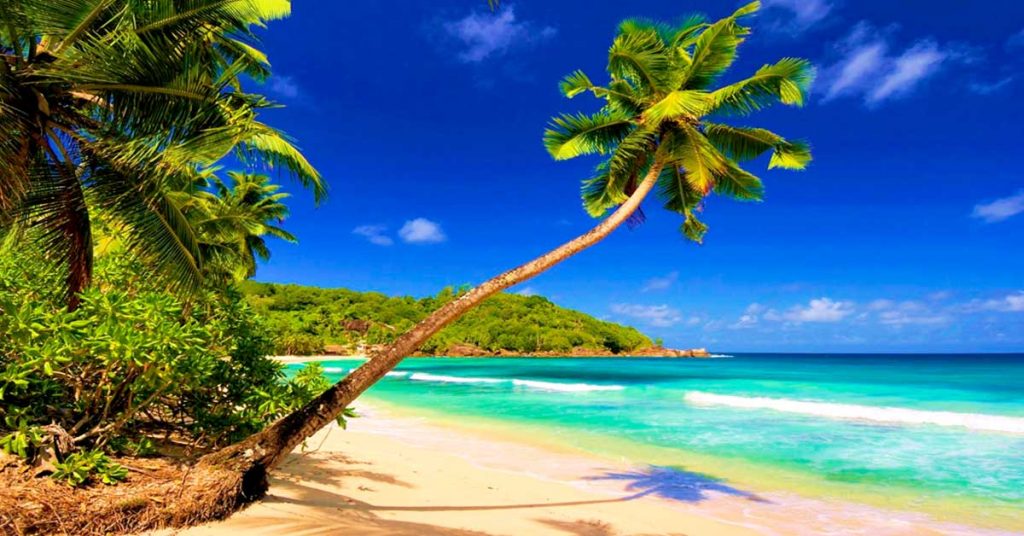MANILA, Philippines – In President Rodrigo Duterte’s second year, the government ramped up efforts to conserve Philippine tourist hotspots.
It all started when the interior, tourism, and environment departments suggested that Boracay is closed due to its grave environmental problems.
In February, Duterte ordered the closure of the world-famous Boracay, which he called a “cesspool.” Starting April 26, the island was closed to tourists for 6 months.
The government has said that it doesn’t want another case of Boracay to happen. In the past months, the Department of Environment and Natural Resources (DENR) has been issuing notices of violation to errant establishments left and right.
In less than 3 months, nearly 900 businesses and households in 5 tourist destinations were issued a violation and eviction notices, for encroaching on easement zones and lack of sewerage treatment facilities, among others.
Here are the top tourist hotspots that the government is monitoring, aside from Boracay:
Palawan
Photo Credit: Henann resort
Palawan is one of the country’s top tourist draws. But the booming industry has also taken a toll on the environment, particularly in Puerto Princesa City, El Nido, and Coron. (IN PHOTOS: Which of these 5 Palawan destinations will you visit next?)
In February, Environment Secretary Roy Cimatu said that the increasing number of people contributes to the concentration of carbon gas at the Puerto Princesa Underground River. Experts said the level of carbon gas remains within the allowable limit, but a study on the area’s carrying capacity is being conducted.
In March, the DENR ordered 32 establishments in El Nido caught violating the easement rule to self-demolish illegally built structures. Business owners asked for an extension until the end of the peak season, but this was rejected by the DENR.
The environment department also issued eviction notices to 364 occupants of forestland-classified areas, including 84 establishments and 262 households along the shoreline of Barangay Corong-Corong.
Reversion cases will also be filed before the courts to cancel land titles issued by local government units (LGUs) to nearly 40 businesses occupying forestland in El Nido. (READ: El Nido, Palawan: Tips for the budget traveler)
Meanwhile in Coron, 75 establishments received eviction notices in April and were asked to self-demolish structures built on waters and within the easement zone.
Coron faces a water problem as well, mainly attributed to the town’s lack of a centralized wastewater treatment facility.
Panglao Island, Bohol
Photo Credit:
Bohol‘s crown jewel, Panglao Island, is also facing environmental problems.
Earlier in February, the DENR mobilized an investigating team to check on the environmental compliance of resorts and other commercial establishments in the island. (READ: 6 underrated, stunning Visayas destinations)
It found out in April that fecal coliform in Panglao’s waters has breached the accepted concentration of 100 most probable number (MPN) per 100 millimeters. It had reached 150 to 200 MPN.
Panglao resorts were also given 6 months to self-demolish illegal structures, or else charges would be filed against them.
Of the 379 establishments in the area, only 10 have sewerage treatment facilities. More than 300 hotels and resorts were found to be violating the Clean Water Act.
Siargao Island, Surigao del Norte
Photo Credit: MindaNews
Siargao Island has grown popular as a surfing haven. (LOOK: 14 stunning photos of Siargao, a surfer’s paradise)
In 1996, former president Fidel Ramos declared Siargao Island and its terrestrial, wetland, and marine areas as protected areas under the category of protected landscape and seascape.
It is home to endemic flora and fauna, with the Mindanao tarictic, rufous hornbill, and the Philippine magpie-robin living in the island.
In March, these establishments were issued notices of violation. The DENR also found that some of the businesses, mostly hotels and restaurants, failed to secure environmental compliance certificates.
Proper sewerage treatment facilities are also nonexistent, affecting the water quality of the island. Coastal encroachment is a problem, too.
Puerto Galera, Oriental Mindoro
Photo Credit: Scandi Divers
Known for its world-class diving spots in Sabang and white sand beach, Puerto Galera gets more than 300,000 visitors annually.
Back in April, 14 establishments were served eviction notices and were asked to voluntarily remove structures built on easement zones in Sabang and White Beach.
The DENR also found high levels of fecal coliform in Puerto Galera.
In 2014, the United Nations Educational, Scientific and Cultural Organization (UNESCO) almost stripped Puerto Galera of the Man and Biosphere Reserve distinction for not being a model of sustainable development.
In 2017, the title remained for Puerto Galera, after the local government submitted a management plan.
The DENR’s radar
He added that Boracay’s shutdown made other areas realize that they could also end up closed unless they shape up. The DENR plans to evaluate all tourism destinations, including beaches in La Union, Aurora, and Zambales, as well as Baguio and Tagaytay, two cities often packed with tourists.
“With the closure of Boracay, our local governments saw the need to address pollution that is happening in their areas. Otherwise, if they will not address the existing problems, there is a possibility that they might also be closed down,” Leones said.
But Leones noted that LGUs – which are key to ensuring compliance with environmental laws – still have limited interventions.
“It’s critical. Without the local government units, rehabilitation will not be effective,” he pointed out.
Their move to evaluate tourism spots, according to Leones, would require a bigger budget for the DENR in 2019.
“We see that this is a priority by the President. This is the priority of the Secretary. So we will be asking for a higher budget allocation to make sure that potential tourist destinations will also be monitored,” he said.
More than the costs, Leones said sustainability of a tourism destination is of paramount importance.
“Environmental compliance is costly. But for a business to be sustainable, one should be compliant as well. If you damage the environment, tourists will no longer come,” he said. “Our concern is really environmental compliance, protection, [and] preservation.”
Source: rappler.com
